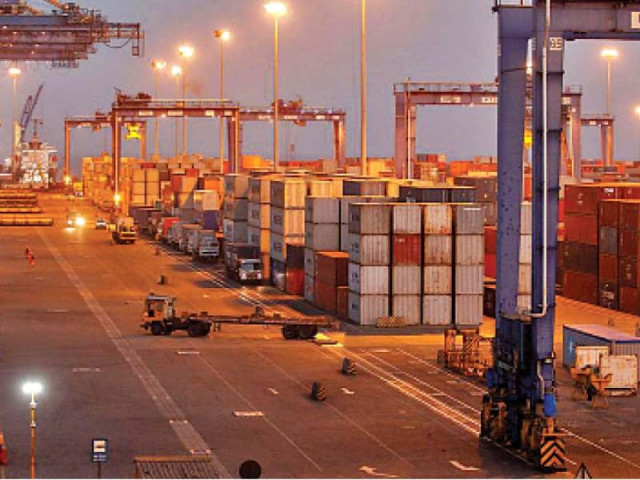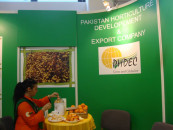Need for export-oriented strategies
Pakistan has very low export-to-GDP value at par with sub-Saharan Africa

One of the starkest statistics that highlights the poor levels of productivity and lack of capabilities of Pakistani firms to compete in the global product markets is the low level of exports as a percentage of GDP in comparison to several of the country’s regional neighbours and other Asian counterparts.
Borrowing data from the World Development Indicators, published by the World Bank, Pakistan’s exports as a percentage of gross domestic product (GDP) in 2020 were a miserly 10%. This had declined to 8.3% in 2017.
This was one of the lowest values reported in the world, lower than the South Asian average of 17.2% and East Asian average of 26.7%, putting Pakistan at par with a few sub-Saharan countries.
The most successful exporters in the region such as Vietnam, Malaysia, and Thailand report values of more than 50%, with Vietnam exceeding 100% of its GDP.
More interestingly, Vietnam made significant strides in improving its export capabilities in the last 35 years. It reported the value of exports as a percentage of GDP at 3.95% in 1988, much below 13.9% reported by Pakistan in the same year.
As the numbers remained flat for Pakistan, these took off for several East Asian economies as they adopted measures to improve the level of integration with regional and global markets.
However, since the recovery phase of the pandemic, exports from Pakistan are hitting new highs. They have already surpassed $15 billion in the first six months of FY22 and experts expect the number to touch $30 billion at the end of current fiscal year.
This paradigm shift as policymakers now focus on export growth makes for an interesting analysis.
Indicators measuring growth in manufacturing value addition per capita, to account for the change in the level of industrialisation, and GDP per capita, to account for economic growth, can help gauge the change in productivity and output across countries.
As comparison, Vietnam in 2002 had similar GDP per capita at purchasing power parity in constant 2017 international dollars as Pakistan, at approximately 3,280.
However, the GDP per capita at purchasing power parity of Vietnam shot up to 8,200 international dollars in 2020, while that of Pakistan increased to 4,563.
Pakistan reported manufacturing value added per capita at $58 in 2000, while Vietnam reported it at $71. However, while the amount increased almost sixfold to $465 by 2020 in Vietnam, Pakistan reported a value of $136, up only about 2.5 times. It is also important to note here that the manufacturing value added per capita of Bangladesh in 2020 was $363, up about sixfold from $58 in 2000.
Therefore, the lack of capabilities of Pakistani manufacturing firms is reflected in the relatively poor productivity growth rates. Export growth must accompany improvement in productivity levels of domestic manufacturers as they capture a greater share in the world market.
The traditionally more callous attitude towards exports by Pakistani policymakers in comparison to the Asian counterparts has created substantial challenges in terms of the lack of dollar inflows into Pakistan, leading to frequent balance of payments crisis.
Exports in H1
According to data of exports published by the Pakistan Bureau of Statistics (PBS), exports have increased 24.9% year-on-year in the first six months of FY22.
Textile group exports have increased 26% while the share of textile products in total exports has increased to 62%. It was 58% in FY18.
Textile producers have received several incentives in the form of export-related tax concessions and subsidies. Although the textile producers form the backbone of Pakistani exports and generate the much-needed inflows, the lack of diversification in exports has often prevented sustainable growth in total exports.
Furthermore, according to data extracted from the International Trade Centre’s Trademap.org, the top three textile products exported from Pakistan in the six-digit HS level, which contributed to more than $3 billion in 2020, have faced a decline in their world import demand between 2016 and 2020.
Even within the textile industry, Pakistan has lower share in global trade of products that typically fared well between 2016 and 2020.
It is imperative that textile producers consider diversification into products that have higher demand. For instance, a shift from using a high mix of natural fibres towards artificial and synthetic fibres will help improve diversification within textile products.
Pakistani exporters are often faced with challenges that require various certifications, registration and licensing, which not only increases the cost of production but can also lead to significant delays in trading.For instance, the European Union imposes measures that require markings, labelling, conformity assessments and documentation of processes and procedures that can discourage many smaller as well as potential exporters from making exports.
Participation in value chains
Furthermore, the analysis of data of participation in global value chains (GVCs), provided by the United Nations ESCAP, reveals that Pakistan performs the worst among South and Southwest Asian countries in terms of backward linkages.
In other words, Pakistan fares poorly in converting foreign input into exportable output as part of GVCs.
On the other hand, a larger percentage of exports from Pakistan are converted into exportable output in importing countries.
Local producers in Pakistan have failed to innovate to ensure that the input mix involving foreign inputs helps boost exports. Government policymakers often link free trade agreements (FTAs) with export potential, not realising that FTAs can help businesses achieve a better mix of foreign inputs and help improve productivity levels.
In comparison, Vietnam reports one of the highest levels of backward linkages as its producers efficiently convert foreign inputs into exports.
Vietnam has signed several FTAs, which make it possible to increase export and import linkages and allow local producers to obtain the most effective mix of inputs to boost their productivity levels and improve competitiveness.
In essence, policy papers on the economy must address the lack of capabilities, innovation and low productivity levels of Pakistani firms in order to achieve economic turnaround.
Export strategy must involve better integration with regional and global markets. It is imperative to make domestic businesses globally competitive.
The writer is the Assistant Professor of Economics and Research Fellow at CBER, Institute of Business Administration, Karachi
Published in The Express Tribune, January 24th, 2022.
Like Business on Facebook, follow @TribuneBiz on Twitter to stay informed and join in the conversation.











1733130350-0/Untitled-design-(76)1733130350-0-208x130.webp)







COMMENTS
Comments are moderated and generally will be posted if they are on-topic and not abusive.
For more information, please see our Comments FAQ